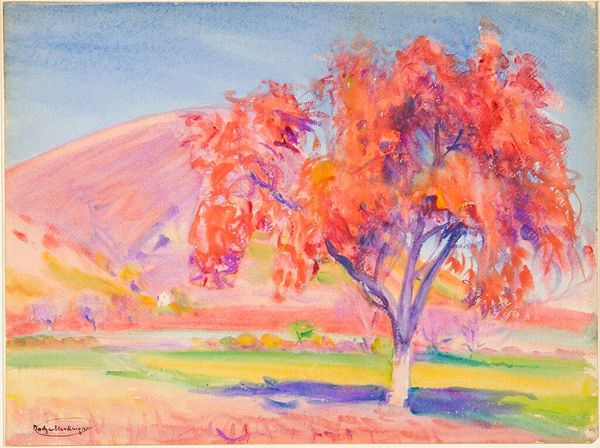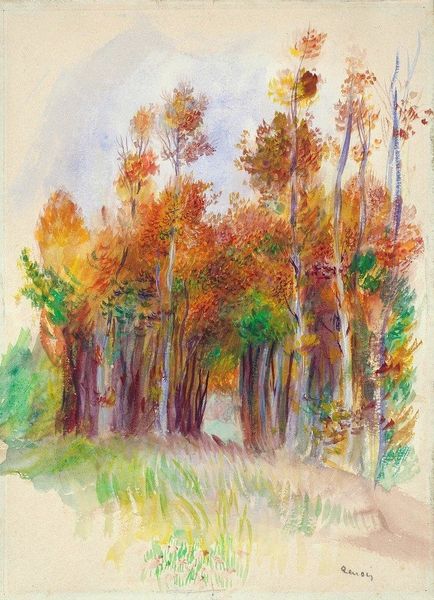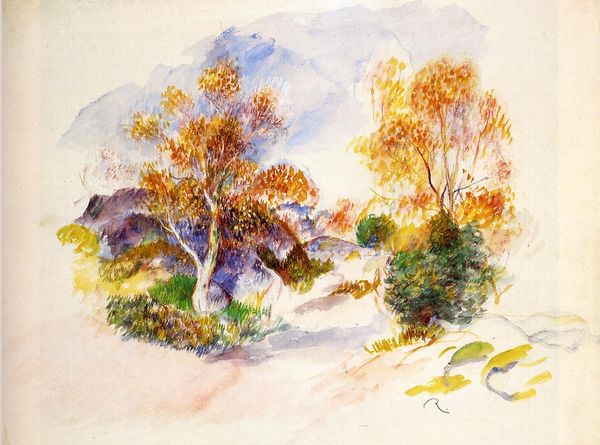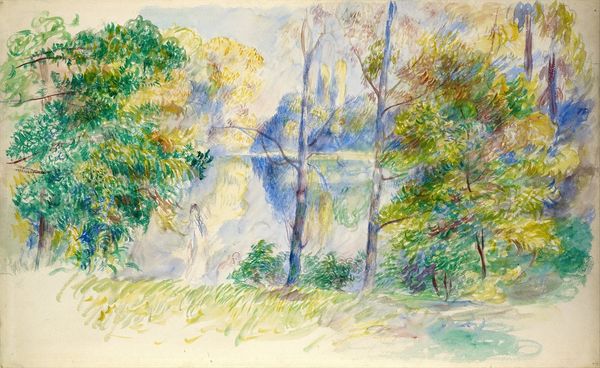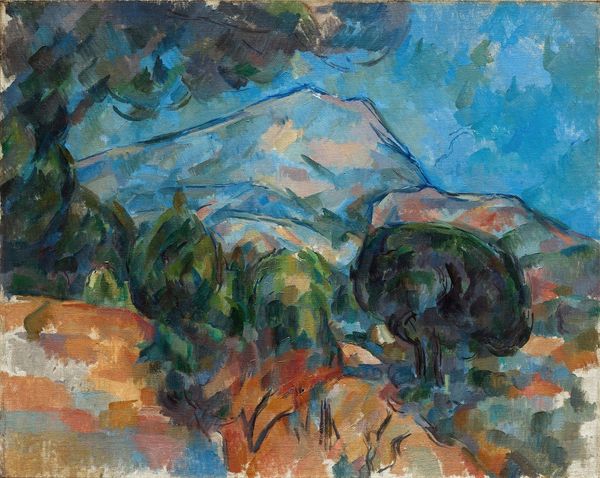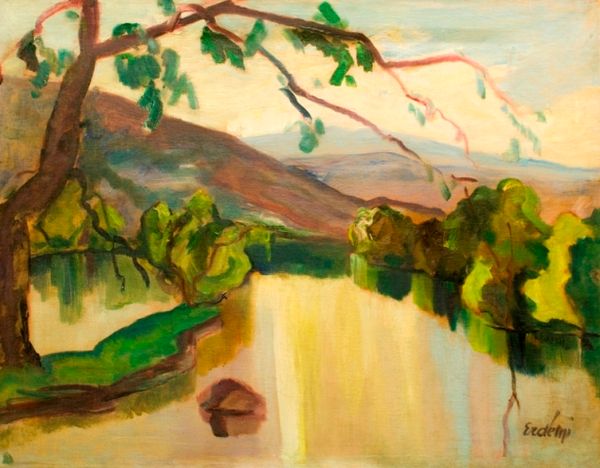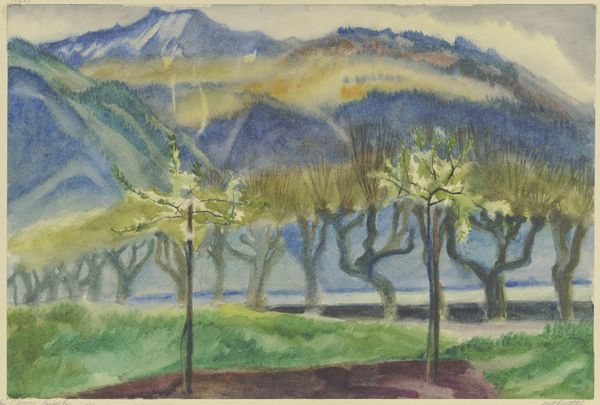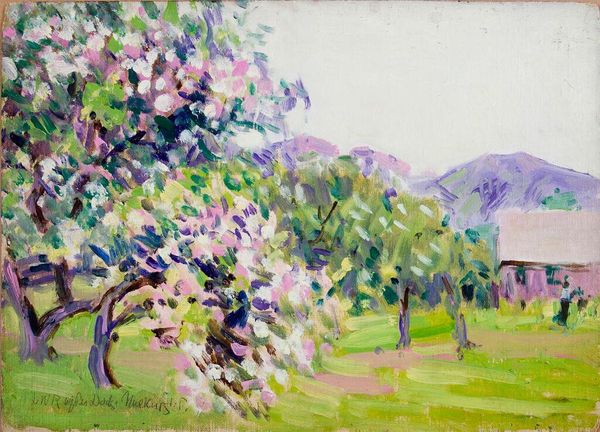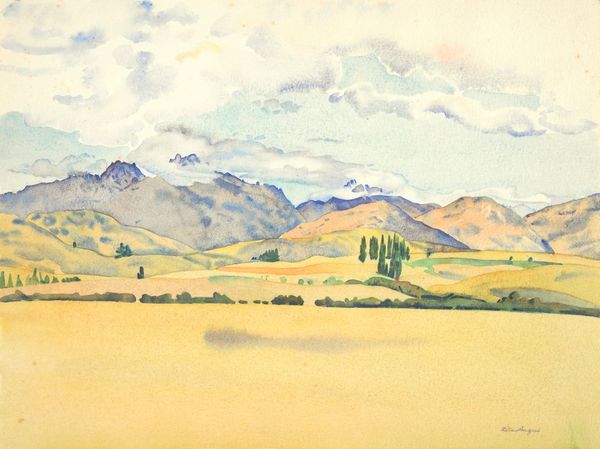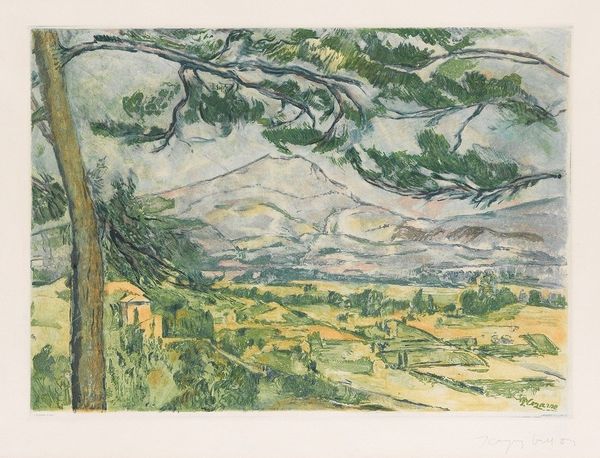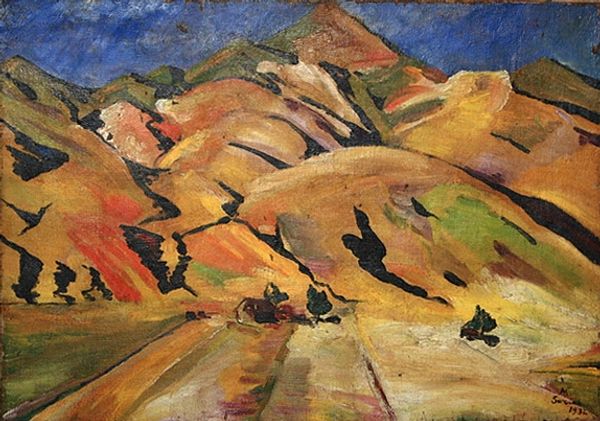
Dimensions: 28 x 20.3 cm
Copyright: Martiros Sarian,Fair Use
Curator: Martiros Sarian's "Landscape. Shirak.," created in 1962, is a fascinating piece employing watercolor on paper to capture the essence of the Armenian landscape. Editor: It strikes me as quite expressive. The vivid color choices and bold brushstrokes evoke a strong sense of place, yet also an almost dreamlike quality. The materials almost melt into the impression of heat. Curator: Indeed. Sarian's commitment to representing light and color is evident in his distinct fauvist approach. He transforms the visual scene of nature with intense pigments, flattening perspective in ways we often see connected to a globalized economy for pigments, particularly synthetics. We can examine what it means for these color choices to reflect something deeper, in the rise of a modern Soviet Armenia. Editor: Absolutely, the use of those colors feels deliberate in a cultural and historical sense. This piece was created during a time of re-evaluating national identity and art's place within the Soviet Union, how do we see Sarian engage or possibly subvert dominant modes? Is it intentional? Curator: That tension is definitely part of the appeal. By emphasizing certain artistic liberties and his use of color, despite working within a system with established themes, Sarian maintained a powerful sense of individual artistic expression. He had great influence as head of the Armenian Union of Artists, allowing him institutional leverage. Editor: I'd like to push us slightly, however. Doesn't this also subtly promote an idealized image of the region? The work doesn’t portray the realities of Soviet modernization that may have affected these regions—especially for farmers and agricultural laborers who would likely have encountered increased productivity demands in this landscape. Curator: And how do you think that effects reception today? The piece avoids political overtones while conveying an appreciation for regional pride in art. Editor: This tension really encapsulates the nuances of Sarian's art and its position during the early Soviet period and how we read that period now: his emphasis on color and simplification of form created something enduring. It allows us today, and into the future, to rethink what Soviet painting might encompass.
Comments
No comments
Be the first to comment and join the conversation on the ultimate creative platform.
